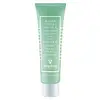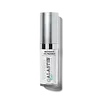What's inside
What's inside
 Key Ingredients
Key Ingredients

 Benefits
Benefits

 Concerns
Concerns

 Ingredients Side-by-side
Ingredients Side-by-side

Glycerin
HumectantWater
Skin ConditioningHelianthus Annuus Seed Oil
EmollientButylene Glycol
HumectantIsodecyl Neopentanoate
EmollientSodium Acrylates Copolymer
Tocopheryl Acetate
AntioxidantRosa Centifolia Flower Water
Skin ConditioningPanthenol
Skin ConditioningAllantoin
Skin ConditioningBisabolol
MaskingTilia Cordata Extract
RefreshingMalachite Extract
AntioxidantArnica Montana Flower Extract
MaskingGinkgo Biloba Leaf Extract
Skin ConditioningAesculus Hippocastanum Seed Extract
Skin ConditioningAlgae Extract
EmollientRosa Damascena Flower Oil
MaskingHydrogenated Polyisobutene
EmollientPEG-40 Hydrogenated Castor Oil
EmulsifyingAcrylates/C10-30 Alkyl Acrylate Crosspolymer
Emulsion StabilisingPhospholipids
Skin ConditioningPolyglyceryl-10 Stearate
Skin ConditioningEthylhexylglycerin
Skin ConditioningDisodium EDTA
Citric Acid
BufferingSodium Hydroxide
BufferingDehydroacetic Acid
PreservativeTocopherol
AntioxidantPhenoxyethanol
PreservativePotassium Sorbate
PreservativeSodium Benzoate
MaskingCitronellol
PerfumingGeraniol
PerfumingGlycerin, Water, Helianthus Annuus Seed Oil, Butylene Glycol, Isodecyl Neopentanoate, Sodium Acrylates Copolymer, Tocopheryl Acetate, Rosa Centifolia Flower Water, Panthenol, Allantoin, Bisabolol, Tilia Cordata Extract, Malachite Extract, Arnica Montana Flower Extract, Ginkgo Biloba Leaf Extract, Aesculus Hippocastanum Seed Extract, Algae Extract, Rosa Damascena Flower Oil, Hydrogenated Polyisobutene, PEG-40 Hydrogenated Castor Oil, Acrylates/C10-30 Alkyl Acrylate Crosspolymer, Phospholipids, Polyglyceryl-10 Stearate, Ethylhexylglycerin, Disodium EDTA, Citric Acid, Sodium Hydroxide, Dehydroacetic Acid, Tocopherol, Phenoxyethanol, Potassium Sorbate, Sodium Benzoate, Citronellol, Geraniol
Water
Skin ConditioningGlycerin
HumectantCaprylic/Capric Triglyceride
MaskingCetearyl Alcohol
EmollientDimethicone
EmollientPentylene Glycol
Skin ConditioningJojoba Esters
EmollientCetearyl Glucoside
EmulsifyingGlyceryl Stearate
EmollientNiacinamide
SmoothingPEG-100 Stearate
Palmitoyl Hexapeptide-12
Skin ConditioningPalmitoyl Tripeptide-1
Skin ConditioningTetrapeptide-30
Skin ConditioningAlbizia Julibrissin Bark Extract
MaskingGallyl Glucoside
AntioxidantSodium Hyaluronate
HumectantEpigallocatechin Gallatyl Glucoside
AntioxidantDarutoside
Skin ConditioningDunaliella Salina Extract
Skin ConditioningOrnithine
Skin ConditioningPhospholipids
Skin ConditioningButyrospermum Parkii Butter Extract
Skin ConditioningGlycolipids
Skin ConditioningBetaine
HumectantTremella Fuciformis Sporocarp Extract
AntioxidantBeta-Glucan
Skin ConditioningSilica
AbrasiveHdi/Trimethylol Hexyllactone Crosspolymer
Propanediol
SolventSqualane
EmollientPolysorbate 20
EmulsifyingPolyacrylate-13
Xanthan Gum
Emulsifying1,2-Hexanediol
Skin ConditioningBenzyl Alcohol
PerfumingDehydroacetic Acid
PreservativeHelianthus Annuus Seed Oil
EmollientLevulinic Acid
PerfumingP-Anisic Acid
MaskingPotassium Sorbate
PreservativeSodium Benzoate
MaskingSodium Hydroxide
BufferingSorbitan Isostearate
EmulsifyingTocopherol
AntioxidantDisodium EDTA
Caprylyl Glycol
EmollientPolyisobutene
Caprylhydroxamic Acid
Phenoxyethanol
PreservativePropyl Gallate
AntioxidantEthylhexylglycerin
Skin ConditioningWater, Glycerin, Caprylic/Capric Triglyceride, Cetearyl Alcohol, Dimethicone, Pentylene Glycol, Jojoba Esters, Cetearyl Glucoside, Glyceryl Stearate, Niacinamide, PEG-100 Stearate, Palmitoyl Hexapeptide-12, Palmitoyl Tripeptide-1, Tetrapeptide-30, Albizia Julibrissin Bark Extract, Gallyl Glucoside, Sodium Hyaluronate, Epigallocatechin Gallatyl Glucoside, Darutoside, Dunaliella Salina Extract, Ornithine, Phospholipids, Butyrospermum Parkii Butter Extract, Glycolipids, Betaine, Tremella Fuciformis Sporocarp Extract, Beta-Glucan, Silica, Hdi/Trimethylol Hexyllactone Crosspolymer, Propanediol, Squalane, Polysorbate 20, Polyacrylate-13, Xanthan Gum, 1,2-Hexanediol, Benzyl Alcohol, Dehydroacetic Acid, Helianthus Annuus Seed Oil, Levulinic Acid, P-Anisic Acid, Potassium Sorbate, Sodium Benzoate, Sodium Hydroxide, Sorbitan Isostearate, Tocopherol, Disodium EDTA, Caprylyl Glycol, Polyisobutene, Caprylhydroxamic Acid, Phenoxyethanol, Propyl Gallate, Ethylhexylglycerin
Ingredients Explained
These ingredients are found in both products.
Ingredients higher up in an ingredient list are typically present in a larger amount.
Dehydroacetic Acid is fungicide and bactericide. It is used as a preservative in cosmetics. Preservatives help elongate the shelf life of a product.
Dehydroacetic Acid is not soluble in water.
Disodium EDTA plays a role in making products more stable by aiding other preservatives.
It is a chelating agent, meaning it neutralizes metal ions that may be found in a product.
Disodium EDTA is a salt of edetic acid and is found to be safe in cosmetic ingredients.
Learn more about Disodium EDTAEthylhexylglycerin (we can't pronounce this either) is commonly used as a preservative and skin softener. It is derived from glyceryl.
You might see Ethylhexylglycerin often paired with other preservatives such as phenoxyethanol. Ethylhexylglycerin has been found to increase the effectiveness of these other preservatives.
Glycerin is already naturally found in your skin. It helps moisturize and protect your skin.
A study from 2016 found glycerin to be more effective as a humectant than AHAs and hyaluronic acid.
As a humectant, it helps the skin stay hydrated by pulling moisture to your skin. The low molecular weight of glycerin allows it to pull moisture into the deeper layers of your skin.
Hydrated skin improves your skin barrier; Your skin barrier helps protect against irritants and bacteria.
Glycerin has also been found to have antimicrobial and antiviral properties. Due to these properties, glycerin is often used in wound and burn treatments.
In cosmetics, glycerin is usually derived from plants such as soybean or palm. However, it can also be sourced from animals, such as tallow or animal fat.
This ingredient is organic, colorless, odorless, and non-toxic.
Glycerin is the name for this ingredient in American English. British English uses Glycerol/Glycerine.
Learn more about GlycerinHelianthus Annuus Seed Oil is the oil derived from the seeds of a Sunflower. Sunflower seed oil is non-fragrant. It is an emollient, meaning it helps to soften the skin.
Sunflower seed oil contains many fatty acids. The fatty acids found in sunflower seeds include (from highest amount to least): linoleic acid, myristic acid, palmitic acid, stearic acid, arachidic acid, oleic acid, and linolenic acid.
These fatty acids help the skin create ceramides. Ceramides play a role in repairing the skin barrier.
Helianthus Annuus Seed Oil helps moisturize the skin. This in turn helps the skin look more rejuvenated and smoother.
Sunflowers are rich in vitamin E.
Historians believe Indigenous cultures of North America domesticated sunflowers before corn. Thus they relied on sunflower oil for a variety of uses. One such use is moisturizing skin and hair.
Sunflower seed oil may not be fungal acne safe. We recommend speaking with a professional if you have any concerns.
Learn more about Helianthus Annuus Seed OilPhenoxyethanol is a preservative that has germicide, antimicrobial, and aromatic properties. Studies show that phenoxyethanol can prevent microbial growth. By itself, it has a scent that is similar to that of a rose.
It's often used in formulations along with Caprylyl Glycol to preserve the shelf life of products.
Phospholipids are naturally found in our skin as they are the main component of cell membranes. Phospholipids have humectant, emollient, antioxidant properties.
Phospholipids are complex lipids that contain glycerin, two fatty acids, and a phosphate group. Some foods that contain phospholipids include soybeans and milk. The phospholipids found in soy come from Lecithin. This ingredient can also be synthetically created.
Due to their hygroscopic nature, they act as both humectants and emollients. Humectants draw moisture from the air to your skin, while emollients help trap moisture in.
The phospholipids in our skin can be naturally depleted. Replenishing the phospholipids in our skin can help hydrate your skin.
Studies show phospholipids display antioxidant activity and may help with reducing the signs of aging.
This ingredient is non-occlusive.
Some types of phospholipids:
Learn more about PhospholipidsPotassium Sorbate is a preservative used to prevent yeast and mold in products. It is commonly found in both cosmetic and food products.
This ingredient comes from potassium salt derived from sorbic acid. Sorbic acid is a natural antibiotic and effective against fungus.
Both potassium sorbate and sorbic acid can be found in baked goods, cheeses, dried meats, dried fruit, ice cream, pickles, wine, yogurt, and more.
You'll often find this ingredient used with other preservatives.
Learn more about Potassium SorbateSodium Benzoate is a preservative. It's used in both cosmetic and food products to inhibit the growth of mold and bacteria. It is typically produced synthetically.
Both the US FDA and EU Health Committee have approved the use of sodium benzoate. In the US, levels of 0.1% (of the total product) are allowed.
Sodium benzoate works as a preservative by inhibiting the growth of bacteria inside of cells. It prevents the cell from fermenting a type of sugar using an enzyme called phosphofructokinase.
It is the salt of benzoic acid. Foods containing sodium benzoate include soda, salad dressings, condiments, fruit juices, wines, and snack foods.
Studies for using ascorbic acid and sodium benzoate in cosmetics are lacking, especially in skincare routines with multiple steps.
We always recommend speaking with a professional, such as a dermatologist, if you have any concerns.
Learn more about Sodium BenzoateSodium Hydroxide is also known as lye or caustic soda. It is used to adjust the pH of products; many ingredients require a specific pH to be effective.
In small amounts, sodium hydroxide is considered safe to use. However, large amounts may cause chemical burns due to its high alkaline.
Your skin has a natural pH and acid mantle. This acid mantle helps prevent harmful bacteria from breaking through. The acid mantle also helps keep your skin hydrated.
"Alkaline" refers to a high pH level. A low pH level would be considered acidic.
Learn more about Sodium HydroxideTocopherol (also known as Vitamin E) is a common antioxidant used to help protect the skin from free-radicals and strengthen the skin barrier. It's also fat soluble - this means our skin is great at absorbing it.
Vitamin E also helps keep your natural skin lipids healthy. Your lipid skin barrier naturally consists of lipids, ceramides, and fatty acids. Vitamin E offers extra protection for your skin’s lipid barrier, keeping your skin healthy and nourished.
Another benefit is a bit of UV protection. Vitamin E helps reduce the damage caused by UVB rays. (It should not replace your sunscreen). Combining it with Vitamin C can decrease sunburned cells and hyperpigmentation after UV exposure.
You might have noticed Vitamin E + C often paired together. This is because it is great at stabilizing Vitamin C. Using the two together helps increase the effectiveness of both ingredients.
There are often claims that Vitamin E can reduce/prevent scarring, but these claims haven't been confirmed by scientific research.
Learn more about TocopherolWater. It's the most common cosmetic ingredient of all. You'll usually see it at the top of ingredient lists, meaning that it makes up the largest part of the product.
So why is it so popular? Water most often acts as a solvent - this means that it helps dissolve other ingredients into the formulation.
You'll also recognize water as that liquid we all need to stay alive. If you see this, drink a glass of water. Stay hydrated!
Learn more about Water